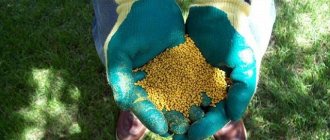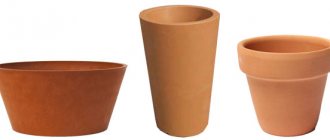Bulbs have a short season - the leaves and buds die off after flowering, and the plants “fall asleep” until next spring. One could forget about them, but in order for tulips, hazel grouse, and muscari to show themselves in all their glory next year and not degenerate over time, one has to tinker with them.
Many gardeners refuse to plant bulbs because of the labor-intensive digging. And, indeed, according to the classical growing technology, bulbs are dug up annually after the leaves turn yellow, sick and damaged ones are discarded, the baby is separated or the overgrown nest of bulbs is divided. Then dry well and store until planting in the fall.
For busy gardeners, however, there is a “loophole” - if the plants are planted at a sufficient distance, then they can not be dug up for an average of 4-5 years. In any case, annual digging is required for exotic tulips - from the Parrot, Fringed and many terry varieties. Also for the imperial hazel grouse, which in the middle zone does not have enough heat to set flower stalks, and drying and warming up in the sun increases the chances of flowering next season.
Types of bulbous flowers
Bulbous and corm plants include those that accumulate nutrients in the bulb (or corm, respectively) - a special formation of colorless leaves. It also serves vegetative, that is, non-seed propagation of plants. Some bulbs are renewed every year, others grow additional layers, increasing in size.
Bulbous plants belong to ephemeroids - that is, plants that are active for a very short time during the most favorable period for them, and then go into a dormant state. During this period, their above-ground part dies off, and nutrients are concentrated in the underground part. This is the essence of bulbous plants - they delight us with short, bright flowering, and then retain vitality in the bulb underground until the next decorative period.
Spring blooming bulbous flowers
This group includes a number of flowers, which are commonly called “snowdrops” - they bloom very early, as soon as the snow melts. These are galanthus (the same snowdrops), spring-flowering crocuses, scillas, snowman or chionodoxa, pushkinia, muscari, white flowers and other small-bulbous plants.
Also included in the spring-flowering group are species that bloom a little later, when the sun begins to actively warm up - these are tulips in the variety of all their varieties, everyone’s favorite daffodils, hyacinths, hazel grouse, iridodictiums, xyphiums or bulbous irises, as well as decorative onions.
Bulbous flowers blooming in summer and autumn
Autumn-blooming colchicums and crocuses should be planted in late summer - August-early September. But now is the time to plant a summer-blooming group. These are lilies, lycoris flakes, summer-blooming camassias, poultry plants, and onions. In some cases, it is permissible to plant early spring and spring flowering plants with a later flowering period, having previously organized a cooling period for them. However, you need to understand that in this case we are using forcing methods, which means that the flowering of tulips and hyacinths will be shorter and the bulb will be weakened.
Growing hyacinths
Caring for hyacinths, daffodils and tulips is very similar. But hyacinths are more afraid of frost.
After flowering, it should turn yellow naturally, transferring all the nutrients from the leaves to the bulb. Only the top of the peduncle is removed. In the southern regions, hyacinths can be left in the ground for the winter. And in the middle zone they freeze out every few years, so it’s better not to risk it and hide them for the winter. But here the onion faces various difficulties. Late digging leads to weakened flowering. The same thing happens when stored at low temperatures.
For the first two months it should be 25°C. Then it is reduced to 17°C. But you always need to make sure that the bulbs do not dry out. To do this, they are sprayed with water or covered with a damp cloth.
Planting bulbous flowers
Bulbs grow better in the sun, but in light shade their flowering lasts longer. It is optimal to place it under the crowns of trees - before the leaves bloom, there is enough light for them, and in the fall the fallen leaves will mulch the plantings.
Groups of bulbous plants scattered among perennials look interesting, the foliage of which will subsequently hide plants that have lost their decorative appearance. Here, the distances between the bulbs can and should be increased, but the impression of a group should be created, and not solitary plants randomly scattered throughout the flower garden.
Sometimes tulips and daffodils are planted together with small bulbous bulbs; the bulbs are placed in the soil in layers at the required depth.
The planting depth depends on the size of the bulb - from the bottom to the soil surface there should be approximately three heights, on heavy soils - up to two heights. Even large bulbs should not be buried more than 20 cm - otherwise it will be difficult for the sprouts to break through. When planted shallowly, a lot of small children develop, often to the detriment of flowering.
However, for the propagation of valuable varieties, this technique may be justified. At the optimal depth, the number of babies will be smaller, but they themselves will be larger and of better quality.
It is convenient to plant a group of bulbs of the same variety in a special plastic basket - digging will be much more convenient, and at least from the bottom and sides the bulbs will be protected from rodents (however, they do not touch the poisonous bulbs of daffodils and colchicum). For sparse plantings it is convenient to use a bulb planter.
When planting bulbs, you should be wary of mechanical damage and spots on the outer scales - most often this is a symptom of fungal diseases. It doesn't hurt to treat the bulbs with a fungicide before planting.
The very first to be planted in the flower garden are kandyki and hazel grouse - their bulbs do not have protective covering scales and dry out quickly. As well as crocuses and autumn-blooming crocuses. Colchicum bulbs often bloom already on the counter - this is absolutely normal.
Then small bulbous plants are planted - their small bulbs are also prone to drying out, hyacinths, whose root system develops relatively slowly, and finally, daffodils and tulips.
Bulbs are planted from late August to early October. From the moment of planting until the top layer of soil freezes, 4-6 weeks should pass - during this time the root system will have time to develop, but the sprouts will not break through to the surface of the soil. If the sprouts try to break through, then mulch the plantings with dry leaves. During the long autumn, bulbous plants can be planted as long as the weather permits. But if the soil has already set, then it makes sense to start forcing, enjoy the flowering of the bulbs in winter and plant the plants in the flower garden a year later.
Growing daffodils
In the summer, in June-July, daffodils are also dug up. Planting and transplanting to a new place of residence can be carried out immediately after digging. They are also planted in the fall, along with tulips. But you need to calculate the time so that the bulbs take root before the onset of frost. Otherwise they will not survive the winter.
Before planting in the ground, daffodils are treated against diseases and pests. The planting location is chosen taking into account the fact that they do not bloom for too long, and yellowed leaves will not decorate the flowerbed. Therefore, they need to be draped with perennials, which are small in height in the spring. The bulbs are planted to a depth three times greater than their height. Place 50 grams of humus soil or humus at the bottom of the hole.
Daffodils do not tolerate frost well, so it is better to cover them for the winter.
Feeding and watering bulbous flowers
Feeding and watering are an important component of comprehensive care for bulbous plants. Early flowering bulbs, which receive sufficient moisture for growth from melting snow, do not need to be watered until flowering begins. However, those bulbous plants that bloom in summer and autumn need additional watering, especially during dry periods when there is no rain. Watering should be done abundantly to saturate the deep-lying roots with moisture. A sufficient amount of moisture is important for bulbous plants even after flowering, so faded plants are watered regularly until the foliage turns yellow.
Over time, the reserves of nutrients in the soil are depleted, and fertilizers are used to replenish them, as well as to improve the soil structure. To do this, you can use organic fertilizers: manure, bird droppings, peat, compost. In addition to organic fertilizers, complex mineral fertilizers are applied to bulbous plants: ammonium nitrate, superphosphate, potassium salts.
Wood ash is a very good potassium fertilizer. Fertilization with nitrogen-containing preparations in combination with potassium is useful for increasing the yield of full-fledged bulbs, the size of the stem, the size of the flowers, and accelerates the onset of flowering. The absorption of nutrients by the bulbs begins in the fall, simultaneously with the growth of roots. The better the root system is developed, the more actively it absorbs nutrients in autumn and spring, which means that the plant will be healthy and strong.
Typically, phosphorus and potassium fertilizers are applied at full rates when preparing the soil for planting, and nitrogen fertilizers are applied when planting bulbs. In addition, during budding and at the beginning of flowering, bulbs need to be fed with a full complex of mineral fertilizers at the rate of 15–20 g per 10 liters of water, and after flowering - with a mixture of potassium and phosphorus fertilizers.
Fertilizing in the fall
Autumn fertilizing should be done when planting new bulbs. When carrying out this, remember that bulbous plants have a short fibrous root system, so they absorb substances that are located only next to them. Strong organic fertilizers (manure, compost, humus) can burn the roots that are beginning to form and lead to rotting of the bottom. They must be used carefully.
When choosing fertilizers for flowers, both annual primroses and perennial bulbous ones, you should pay attention to ammonium nitrate and fertilizers with a high nitrogen content. They provide a good formation of “babies” on the bulbs, increase survival rate and promote full flowering.
To dig up or not to dig up bulbous flowers
This point raises many questions, although everything is quite simple. Let's figure out whether it's worth digging up tulips or daffodil bulbs to save them until spring.
Small bulbous plants - crocuses, muscari, galanthus, pushkinia - do not require annual digging. Like daffodils and botanical tulips. Their transplantation and division of the clump is carried out every 3-5 years. The need for replanting is due to the fact that the planting becomes excessively thick and the plants experience a nutritional deficiency. And also with the fact that during reproduction, new bulbs are formed in the bottom area, which means deeper and deeper. Over time, they go to a depth that prevents the normal existence of the plant. To preserve the same daffodil bulbs until spring, they should be dug up periodically.
But the bulbs of varietal tulips need to be dug up annually - after flowering has completed and the leaves have withered. This point is of key importance for the preservation of the bulb and the development of the plant. Indeed, there is a great temptation to dig up the bulbs while the leaves are still intact. Firstly, you can see where to dig, and secondly, you want to remove the plants before they completely lose their decorative value. But the time has not yet come to dig up tulips. The period after flowering is very important for the plant - now nutrients accumulate in the bulb, it is renewed and divided. It is necessary to dig up tulip bulbs only after the leaves have withered.
Also, hyacinth, iridodictium, xyphium, and decorative onions need annual digging.
Regular digging of these plants is important to imitate nature's natural cycles and because our wet, cold summers often cause the bulbs to rot. Let’s not forget about the southern species that do not winter with us. We dig them up in the fall - before frost sets in. In contact with
Soil preparation
If the soil is clayey, 6 kg of sand per square meter is added to it, while sandy soil is compacted with clay so that moisture is better retained in the soil. The fertile layer must be at least 30 cm. The root of the flower penetrates the ground 70 cm. Every year a new bulb is formed lower than last year's. Before planting, the soil is fertilized by adding 5 kg of manure, a couple of kilograms of peat, and 50 g of nitrophoska. Fertilizer and various feedings for tulips make it possible to obtain not only large flowers, brightly colored flowers, but also viable baby bulbs.
Early bulbous plants do not need excess moisture. It leads to rotting of the roots. Therefore, areas where flooding is possible are drained. It’s easier to do this by growing flowers in beds. They lift the flowers upward, and excess water is collected in deep rows, which simplifies the care of tulips and daffodils in the spring.
After applying fertilizers, carefully dig up the soil so that it becomes homogeneous.
Before the onset of frost, the area is mulched with sawdust or peat. A layer at least 5 cm thick will protect the bulbs from frost, extend rooting time, and subsequently become an additional fertilizer for plants.
How many times should I feed the flowers?
At different stages of growth, certain nutrients are needed. The plant faces 2 main tasks. First, to form vegetative organs (stems and leaves) that can support flowers. Secondly, form buds and bloom. This is a “minimum program” for plants, which determines the required amount of fertilizing.
However, the frequency of fertilization also depends on the lifespan of the plant (annual, biennial or perennial). The “minimum program,” i.e., applying fertilizers twice during the growing season is only relevant for annual flowers, the life cycle of which fits into one season. They are fertilized 2-3 weeks after planting in the ground to stimulate active growth of shoots, and during the formation of buds to prolong flowering as much as possible.
The life cycle of biennial and perennial plants includes wintering, so there is a need for a third feeding, which will help the plant prepare for an unfavorable period. But the “minimum program” for perennials also requires adjustments, because some flowers need more nutrients and require 4-5 feedings per season.
Soil and containers for forcing
As for the soil, a mixture of 4 parts acidic sphagnum peat and 1 part sand is ideal for growing tulips at home in a pot. You can also simply buy a ready-made substrate specifically for bulbous plants. In this case, at the bottom of the container there should be 1-2 cm of drainage layer (for example, expanded clay or broken glass). If you take soil from the beds, do not forget to disinfect it, and also mix it with peat and sand. The soil is poured into the pot so that there is a space of 2 fingers left to its edges. Do not cover the bulbs completely with soil!
A beautiful flowerpot is, of course, very important, but the functionality of the container is much more important for the health of the flowers. At home, hyacinths and other bulbous plants should be grown in pots that meet the following requirements:
- have a drainage hole at the bottom;
- wide neck and smooth inner walls;
- height accommodates at least three bulbs stacked on top of each other.
You can plant the bulbs either individually or in groups. However, there must be at least 1 cm of soil between the planting material. Otherwise, water stagnation and plant rotting are possible.
Feeding frost-resistant primroses in spring
During the period of active growth, primroses must be fed with potassium-phosphorus fertilizer (nitrophoska, superphosphate) at the rate of 20 g/m2. m. You can use organic matter - 100 g. chicken manure per liter of water, use the solution for watering.
Flowerbed of primroses in the garden
Primroses are fertilized in three stages:
- After the snow melts, if the seeds were sown on the snow.
- Two weeks after the leaves appear.
- The third time was in the middle of summer.
Perennial primroses with a root system (such as primrose) in early spring benefit from an organic mixture of peat, humus, and rotted compost (in a ratio of 1:1:2; 1.2 kg per sq.m.), which is distributed over the site. For better formation of buds, you can use ready-made liquid fertilizers “Baikal”, “Kemira”, containing a complex of nutrients, once a season.
How to feed cut tulips?
Special cutting fertilizers, such as Chrizal, will help keep plants fresh and disinfect water. You can use antibacterial agents: an activated carbon tablet or aspirin. Trim the stems by 1 cm daily. Tulips can be grown in a vase.
Interesting materials:
Autonomous non-profit organization - what does it mean? Azat what does this name mean? What does Aziza mean? What does Bayan mean? Banking support is not provided, what does this mean? What does a white wallet mean? White noise what does it mean? What does the Mother of God with seven arrows mean? What does a watch on the right hand mean? What does a person love black mean?











